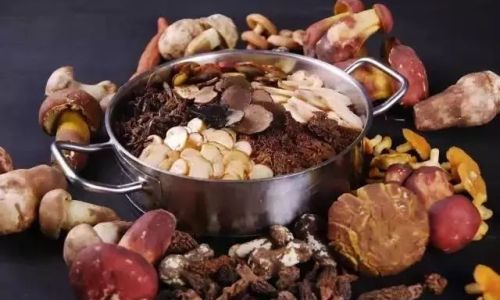Table of content
Cordyceps militaris, often referred to as “North Cordyceps,” has gained global recognition for its remarkable health benefits and culinary versatility. Revered in traditional Chinese medicine for centuries, this fungus is now embraced worldwide as a superfood and dietary supplement. Rich in bioactive compounds like cordycepin, polysaccharides, and antioxidants, it offers immune support, anti-inflammatory properties, and energy-boosting effects. However, to maximize its benefits, understanding the best ways to consume it is essential. This article explores the most effective methods to incorporate Cordyceps militaris into your diet, ensuring optimal absorption and health outcomes.
Understanding Cordyceps Militaris: A Nutritional Powerhouse
Before diving into consumption methods, it’s crucial to appreciate why Cordyceps militaris is valued. Unlike its cousin, Cordyceps sinensis, which grows parasitically on insects, C. militaris is cultivated, making it more sustainable and accessible. Its nutritional profile includes:
- Polysaccharides: Enhance immune function and reduce inflammation.
- Cordycepin: A unique compound with potential anti-cancer and anti-aging properties.
- Adenosine: Improves blood flow and cardiovascular health.
- Vitamins (B1, B2, B12, K): Support energy metabolism and bone health.
- Minerals (Potassium, Calcium, Magnesium): Essential for nerve and muscle function.
These components work synergistically to promote overall wellness, but their bioavailability depends heavily on how Cordyceps is prepared and consumed.
Raw Consumption: The Simplest Approach
Consuming raw Cordyceps militaris might seem straightforward, but it requires caution. Fresh or dried fungi can be blended into smoothies, juices, or salads. However, raw consumption has pros and cons:

- Pros: Retains maximum nutrients since heat isn’t applied.
- Cons: Tough texture and earthy flavor may be unpalatable. Additionally, some compounds, like cordycepin, are more bioavailable when heated.
To mitigate the taste, pair raw Cordyceps with sweet fruits like bananas or berries. Alternatively, dehydrate thin slices and crush them into a powder for easier mixing.
Cooking Methods: Balancing Flavor and Nutrition
Cooking Cordyceps militaris enhances its digestibility and flavor, making it a staple in Asian cuisines. Here’s how to optimize cooking techniques:
A. Soups and Broths
Simmering Cordyceps in bone broth or vegetable stock for 1–2 hours extracts its nutrients while imparting a subtle umami flavor. Pair with ingredients like ginger, garlic, or mushrooms to mask any bitterness. This method is ideal for cold seasons, as it warms the body and supports immunity.
B. Stir-Fries and Sautés
Lightly sauté Cordyceps with vegetables like spinach, bell peppers, or carrots. Use minimal oil to preserve nutrients. The high heat breaks down cell walls, releasing bioactive compounds. Avoid overcooking to prevent nutrient degradation.
C. Tea Infusions
Brew dried Cordyceps in hot water (80–90°C) for 5–7 minutes. Add honey or lemon for flavor. This method is convenient for daily consumption and supports hydration.
Extracts and Tinctures: Concentrated Potency
For those seeking maximum efficacy, extracts and tinctures are preferable. These products undergo processes like hot water or alcohol extraction, concentrating active compounds.
- Hot Water Extracts: Mimic traditional decoctions, ensuring high polysaccharide content.
- Alcohol-Based Tinctures: Preserve fat-soluble compounds like cordycepin.
Dosage varies by product, but 1–3 grams daily is typical. Always choose reputable brands to avoid adulteration.
Supplements: Capsules and Powders
Capsules and powders offer precision and ease. Look for standardized extracts containing 5–10% cordycepin. Powders can be mixed into smoothies, oatmeal, or coffee. Start with 500–1000 mg daily and adjust based on tolerance.

Combination with Other Foods: Synergistic Effects
Pairing Cordyceps with complementary ingredients amplifies benefits:
- Vitamin C-Rich Foods: Enhances iron absorption from Cordyceps.
- Healthy Fats: Avocado or coconut oil improves absorption of fat-soluble compounds.
- Adaptogens: Combine with ginseng or ashwagandha for stress relief.
Optimizing Absorption: Key Tips
- Pair with Piperine: Black pepper extract (piperine) boosts nutrient absorption.
- Avoid Caffeine: Tannins in coffee/tea may hinder nutrient uptake.
- Time of Day: Consume in the morning for energy or before workouts for stamina.
- Consistency: Regular intake yields gradual, sustained benefits.
Potential Side Effects and Precautions
While generally safe, Cordyceps may cause:
- Allergic Reactions: Rare, but test a small amount first.
- Digestive Upset: Overconsumption may lead to bloating.
- Medication Interactions: Consult a doctor if on blood thinners or immunosuppressants.
Pregnant individuals and those with autoimmune disorders should exercise caution.
Scientific Backing: What Research Says
Studies highlight Cordyceps’ potential:
- Immune Support: Polysaccharides stimulate macrophage activity.
- Anti-Fatigue Effects: Increases ATP production, enhancing endurance.
- Anti-Aging: Antioxidants combat oxidative stress.
However, more human trials are needed to confirm these effects conclusively.
Conclusion: Tailoring Consumption to Your Needs
The “best” method depends on your goals, palate, and lifestyle. Raw consumption suits purists, while extracts cater to those seeking potency. Cooking blends nutrition with culinary creativity, and supplements offer convenience. Regardless of the approach, consistency is key. As with any supplement, consult a healthcare provider before integrating Cordyceps militaris into your routine.
By exploring these methods, you can harness the full potential of this ancient fungus, transforming it from a mere ingredient into a cornerstone of holistic health. Whether sipped as tea, simmered in soup, or encapsulated, Cordyceps militaris invites you to embark on a journey toward vitality and well-being.






0 comments